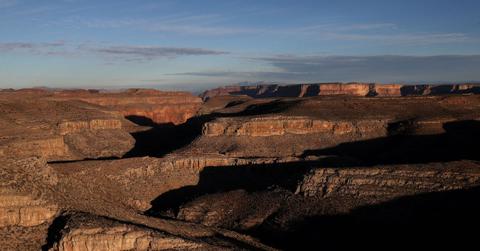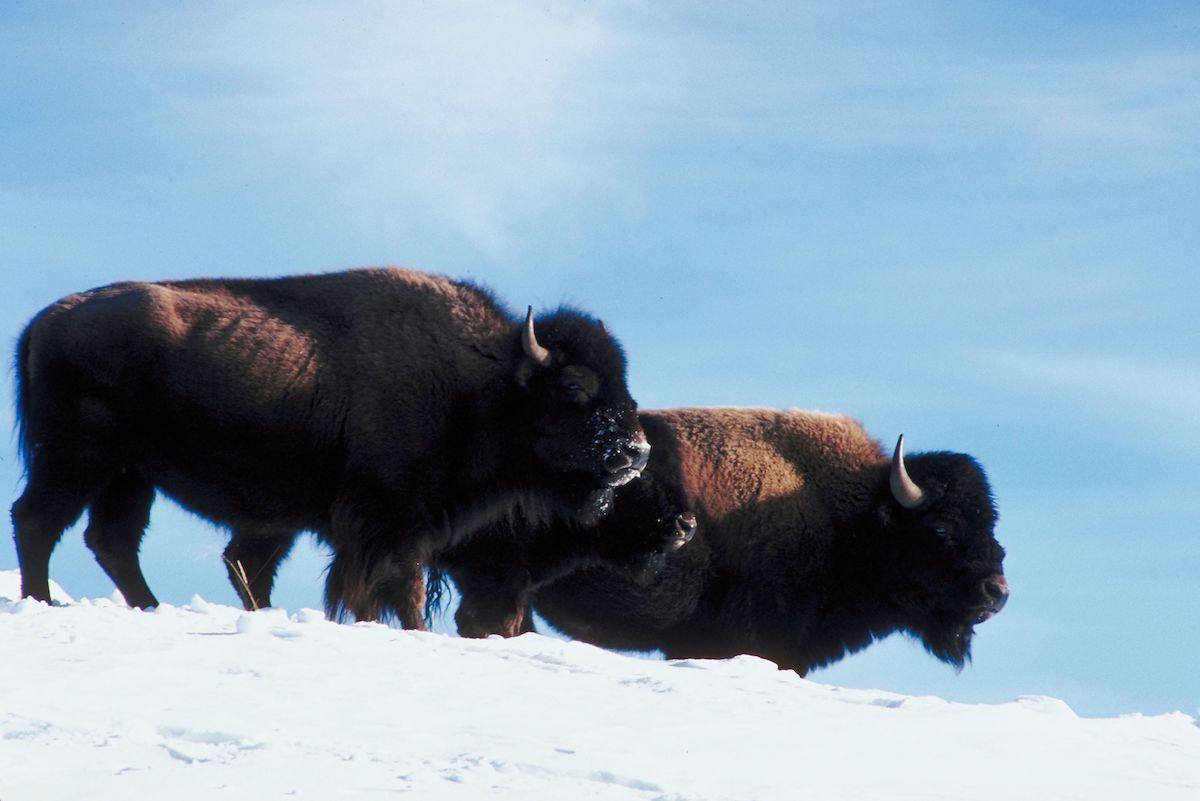The Grand Canyon Is Letting 12 Hunters Kill Bison. 45,000 Applied.
Published May 7 2021, 12:10 p.m. ET

Get your kicks from shooting majestic animals? Weird flex, but OK…
In a first for Grand Canyon National Park, officials are opening up the Grand Canyon to bison hunting this fall (technically “lethal removal” — we’ll explain). There are only 12 slots available — and a whopping 45,000 hunters submitted their applications in time for this week’s deadline.
Why is Grand Canyon National Park letting people kill bison? And why is the National Park Service being careful to avoid calling this process hunting?

Why is Grand Canyon National Park allowing bison hunts?
According to the National Park Service (NPS), the North Rim’s bison growing population became an issue in September 2017, when the agency counted about 600 bison in the area. The herd of several hundred bison had taken over the North Rim, and over the past few years, the population has continued to grow, and the animals have been “grazing and trampling on water, vegetation, soils, and archaeological sites,” as per the NPS. The agency also claims that the animals have been interfering with visitor experiences.
In 2017, the NPS determined that 200 bison would need to be removed from the North Rim, through a combination of “lethal removal” (aka slaughter), non-lethal capture, and live removal.
However, the live and non-lethal methods presumably were not enough — in September 2021, the NPS will kick off a “pilot lethal removal program” of bison on the Grand Canyon’s North Rim.
Incredibly, 45,000 people applied for the 12 slots to kill bison in the Grand Canyon.
In the spring of 2021, the Arizona Game and Fish Department (AZGFD) opened up applications for hunters who want to kill the majestic bison of the Grand Canyon, due the first week of May. Only 12 slots are available, and the 12 hunters chosen will get to shoot one bison each. Shockingly, more than 45,000 people had sent in applications in time for the deadline, according to AZGFD.
AZGFD promptly selected 25 applicants from a lottery of the 45,000 applicants, as per The Hill. They will all have to visit the park for “provisional selection,” where they will be evaluated on their strength and hunting abilities.
Why is this a lethal removal and not a hunt?
Hunting is generally illegal in national parks, according to The Hill. For that reason, the NPS maintains that this program is technically not a hunt, rather a lethal removal operation. In a lethal removal, animals are killed for land management under the direction and control of the NPS, while hunting typically refers to recreational slaughter, and is not strictly overseen. Additionally, lethal removal operations typically do not allow the hunters to keep the animal carcasses, while hunters usually keep the dead bodies as either trophies or to cook and eat.
However, the NPS is blurring the lines quite a bit here — the agency says that AZGFD “may distribute what they choose to skilled volunteers on the last day of their service” such as meat, heads, and hides. Any bison body parts that volunteers don’t want will be given to the Tribal governments of the Grand Canyon’s traditionally associated tribes.
Interestingly, while the NPS consciously avoids the words “hunt” and “hunters,” instead opting for terms like “lethal removal” and “animal destruction,” AZGFD literally calls this a “bison hunt.”
Hunting is not the only solution for overpopulation — there are alternatives.
There are many humane solutions to overpopulation that would keep the Grand Canyon’s bison alive.
For instance, officials could relocate the bison to other protected areas that can handle the animals’ intense grazing, and that humans do not visit. They could introduce birth control to the animals, such as hormonal contraception, surgical sterilization, and immunocontraception, as per Wild-Animal Suffering Research. Or, as the Animal Welfare Institute suggests, officials could strategically build fences that would keep the bison confined to one large area.